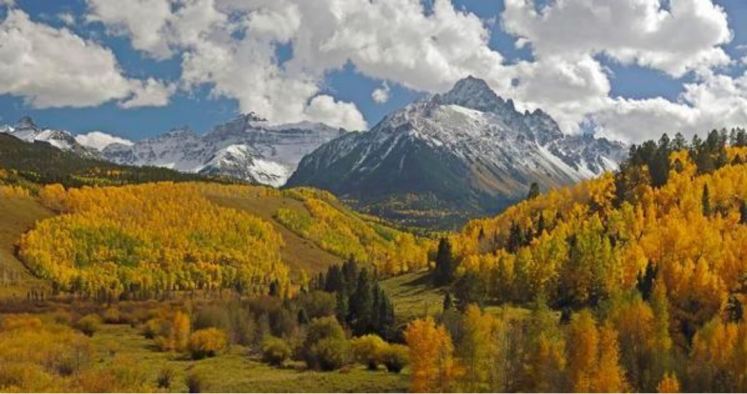
Aubert Ranch was put into permanent conservation in 2006 and owner Maxine Aubert received transferable tax credits through the Mesa Land Trust. Photo courtesy of John Fielder.
What is a conservation easement? And how does a conservation easement compare to the lands owned by the Jefferson County Open Space Program?
The Land Trust Alliance (www.LandTrustAlliance.org) defines a conservation easement as a voluntary legal agreement between a landowner and a land trust or government agency that permanently limits uses of the land in order to protect its conservation values. A conservation easement ensures that the land will never be subdivided or commercially developed. In return for “encumbering” the property and restricting future value, the landowner receives tax credits from the State.
Land under a conservation easement is still owned by the original landowners, is generally inhabited by the land owners, and can be worked as an active cattle ranch or farm or whatever it was before the conservation easement was attached to the land. Lands conserved with a conservation easement are not public lands, and the public cannot hike or trek across the land without the express permission of the landowner.
Our Open Space Parks differ from lands preserved with a conservation easement in that the land is owned by the public and administered by Jefferson County, humans are not allowed to live in an Open Space Park, the Park isn’t worked as a ranch or a farm, and the public is encouraged to enjoy the park via the many trails and facilities that are constructed in the Park.
In both cases, the beauty of nature is preserved, and even if we can’t hike a conservation easement (unless the landowner is a personal friend), we can still find pleasure in the fact that these open lands are not going to become a subdivision or a shopping mall.
Conservation easements are not cheap to put in place. The landowner has to pay thousands of dollars in up-front fees (appraisal fees, legal fees, etc) before ever seeing any of the tax credits. In addition, landowners are often land-rich but cash-poor, so tax credit may not be very beneficial to them. Colorado was the first state in the nation to establish a transferable conservation easement tax credit, which they did in 2000. By giving the landowner the option to sell the tax credits to high-income tax payers, the landowner is able to recoup their investment in the conservation easement, and the land is preserved from subdivision and development. This is a win-win-win solution.
But, as with all good solutions, there’s some room for improvement. Rob Bleiberg, Executive Director of the Mesa Land Trust (southwest Colorado), penned an op-ed in The Denver Post, explaining about conservation easements and the some of the issues that the Colorado program has run into.
Conservation Tax Credit Program Too Critical Not To Fix
By Rob Bleiberg, Opinion Columnist, The Denver Post, January 28, 2017
http://www.denverpost.com/2017/01/28/conservation-tax-credit-program-too-critical-not-to-fix/
Open Space Parks, like ours in Jeffco, are wondrous places, but without the complimentary preservation capability of conservation easements, our State would be a lesser place. By 2016, more than 2.2 million acres of land have been protected by conservation easements.
“Colorado’s future will be defined by the individual decisions that thousands of farmers, ranchers and other landowners make in exercising their private property rights in the coming years. Conservation easements offer an essential tool if we are to pass our state’s grandeur on to future generations.”





 The Mountain Area Land Trust in Evergreen is working with Volunteers for Outdoor Colorado this summer on Floyd Hill Open Space trail building projects.
The Mountain Area Land Trust in Evergreen is working with Volunteers for Outdoor Colorado this summer on Floyd Hill Open Space trail building projects.














